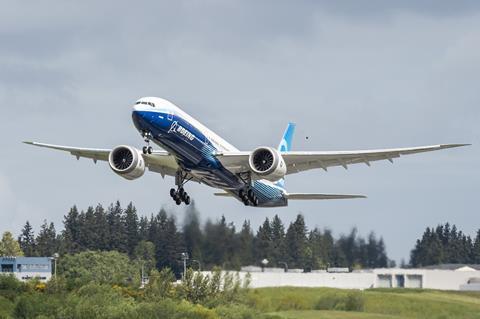With the world’s number one aerospace manufacturer facing a barrage of problems, from the Max grounding to the Covid-19 collapse in demand, Alex Krutz, manging director at Patriot Industrial Partners, considers whether a supply chain that is much more robust than in the past can be crucial to getting it through the crisis?
“Government’s view of the economy could be summed up in a few short phrases: If it moves, tax it. If it keeps moving, regulate it. And if it stops moving, subsidise it.” This Ronald Reagan quote resonates with the current situation for the aerospace sector.
Boeing is facing several unprecedented macro-economic challenges at one time which has led to discussions for government intervention through a bailout.
First, the 737 Max was grounded and eventually the production line was stopped. Then the Covid-19 virus halted the 777 and 787 production lines at several Boeing factories. Then oil recently fell to historic lows, partially due to the decrease in demand for air travel. These trends and liquidity discussions are likely what has led to discussions about a government bailout.

What has been absent from the conversation is the strength and stability of the aerospace supply chain. In many ways, the supply chain is now more mature, diversified and well positioned to handle this economic downturn than it was after 9/11 or the financial crash of 2008. This past 12-year super cycle has seen suppliers succeed with merger and acquisitions activity, business maturity through quality, efficiency and cost structure improvements and diversification of customer platforms.
The merger between Raytheon and United Technologies, forming Raytheon Technologies, is an example of two large suppliers finding synergies and optimisation. The two companies will become a stronger single unit through cost synergies and becoming more of a diversified multi-industrial business.
German seat manufacturer Recaro, another first tier supplier, over the last 15 years has focused on increasing its market share across multiple customer platforms. The firm has worked on establishing a global company footprint that is capable of quickly ramping up and slowing down production to support the market dynamics.
Pryer Aerospace, a tier two supplier based in Tulsa, Oklahoma, has focused on customer diversification and expansion from commercial to defence and space segments. In addition to re-investment efforts, the company has focused on margin improvements through lean implementation and quality improvements within its manufacturing processes.
Yes, there will be some suppliers that were not well positioned before this downturn. They had poor balance sheets and cash management and did not make efforts to improve their business or diversify their customer base. Unfortunately, some of these suppliers will face challenging times through the economic downturn. However, a large number of suppliers over this last decade have taken significant steps to ensure their long-term success.
Boeing has made key moves to support and improve its production processes, quality and productivity improvements. It has done this both internally at its factories along with efforts in the supply chain over the last 10 years.
Boeing has successfully made it through past economic downturns.The difference for Boeing this time around will be that the supply chain is much better positioned to handle the downturn and its members will be good partners to Boeing. It is important for Boeing to continue to foster that relationship with the supply chain.
According to Kevin Michaels, managing director of AeroDynamic Advisory, with suppliers accounting for 70% of aircraft costs, the “aviation ecosystem is dependent on a strong supply chain”. The supply chain today is better positioned to help the aviation industry rebound and it will be the tailwind that Boeing needs to get through this challenging period.

Alex Krutz is managing director at Patriot Industrial Partners, an advisory firm focused on operations and supply chain


























